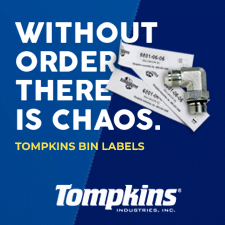Selling commodities

By Dave Kahle
“How do you create a perceived value to differentiate yourself from the competition when you are both selling a commodity?”
That’s a question I’m often asked in my seminars. It uncovers a problem that is spreading to almost every industry. The rapid pace of technological development and our ultra-competitive global economy means that no one can keep a competitive edge in their product for very long. Develop a hot new product or service and before you can take your first check to the bank, a competitor has a hotter or cheaper version. As a result, customers are more and more inclined to view your product or service as a commodity – no real difference between you and the next guy.
This complicates life for the sales person. In some cases, you are selling exactly the same thing as your competitor. In other cases, your product may not be exactly the same, but the customer views your product as a commodity with no real differences between what you sell and what your competitor offers. How much real difference is there between Coke and Pepsi after all?
Regardless of the situation in which you find yourself, the problem for the sales person is the same – getting the business in the face of the customer’s perception of your “me too” product or service.
So, what do you do? To put it simply, you must detail and communicate the important ways your offering differs from your competitor’s offering.
That’s easier said than done. To do so effectively, you need to spend some time thinking and preparing. And that means that you must carefully consider the two most important elements of the sale – your offering, and your customer. In this column, we’re going to focus on one part of that equation – your offering.
Granted, your product may be exactly the same as the competition, but the totality of your offering may be dramatically different. I use the word “offering” to indicate every aspect of the purchasing decision – not just the product. For example, the customer buys the product from a company – yours or the other guy's. The customer buys it from a sales person – you or the competitor. Your company and you are part of the “offering.” In addition, there may be differences in your terms, delivery, your customer-service capabilities, your follow-up, your return policy, your value-added services, etc. All of these are part of your “offering.”
The product may be identical, but everything else about your offering may be different. For example, let’s say you are contemplating purchasing a new Taurus. You have identical price quotes from two dealers. The product is the same, and the price is the same. However, one dealer is close by, the other across town. One dealer has a reputation for great customer service; the other has no such reputation. The sales person for the first dealer is the brother of an old high-school friend, while the sales person for the second dealer is a bit cocky and pushy. The first dealer has a clean, comfortable establishment, while the second one is cramped, cluttered and dirty.
From whom do you buy your Taurus? Of course you buy it from the first dealer. Not because of any differences in the product or the price, but because of differences in the offering. Got the idea? There is a whole lot more to a decision to buy than just the product or the price.
Your first job is to identify those differences. Here are some very specific steps you can take today.
1) Think about everything that is associated with the product when a customer purchases it. Create several categories, and label columns on a piece of paper with the names of those categories. For example, the first column could be headed with the word “company,” the second with the word “sales person,” the third with “terms.” Continue in this way, identifying every aspect of the offering and placing each of those components at the top of a column.
2) Now, consider each column one at a time, and list all the ways that your offering differs from your competitor’s in that column. For example, your company may be locally owned as opposed to your competitor’s branch of a national company. Or you may be physically closer to the customer, or larger, smaller, newer, older, etc. After you’ve exhausted one column, move on to the others, filling in the details as you go.
3) This exercise will typically reveal dozens (and in some cases hundreds) of specific, detailed differences. Far too many than you can easily communicate to the customer. So, your next step is to pick out those differences that are most important to your customer. Keep in mind that often what you see as important may not be viewed that way by your customers.
At one point in my career, I worked for a company that celebrated its 100th year anniversary. That was unusual. No other competitors had been in business nearly that long. The company decided to make a big deal about it. A history of the company was written, brochures printed, even murals depicting significant moments in the company’s history were painted on the walls of the corporate office. We all thought it was important.
Our customers, however, didn’t care. After respectfully listening to our boasting, their response was some form of “So what?”. In other words, our 100 years didn’t mean anything to them. In no way did it make their jobs easier, simplify their lives, or make them more important to their companies. What we thought was important turned out to be irrelevant from our customers’ perspective.
Don’t make the mistake we made. Instead, take the time to critically analyze your list, and eliminate those items that are not important to your customer, that don’t impact their jobs or make a difference to them. You should be left with a handful of items.
4) One more step to the preparation. Translate each of those items into statements of benefit to the customer. For example, your company may be local, while your competitor ships from 50 miles away. So what? What does that mean to your customer? You could translate that item of difference into a benefit by saying something like this: “As opposed to some other suppliers, we’re just 15 minutes from your plant. This means that you can get quick delivery of emergency shipments, as well as rapid response to any problem that might develop. So, you’ll have potentially less downtime in the plant, and of course, less stress and pressure on you.”
Now that you’ve professionally prepared, you are ready to communicate those differences to your customer. You need to point them out in an organized and persuasive presentation.
Prepare a sell sheet with each of the differences noted as a bullet. Next to each bullet, have a few comments that capsulize the benefit statements you prepared. Then, meet with your customer, lay the sheet down in front of him/her, and talk down through it, explaining each point as you go.
Treat it like you would any other well-done presentation. Be sensitive to your customer’s reaction, and ask for feedback as you work down through the list. Say, “How does that sound?” or “Does that make sense to you?” and emphasize those things that seem to be more important to your customer. Then, leave that sheet with your customer.
I’m always amazed at the number of sales people who are confounded over the customer’s perception that their product is just like the other guys, when those sales people have done nothing to show the customer how it is different.
As always, if you have done a good job of analyzing, preparing, and communicating, your customer’s perception should be altered, and you gain the business.
If you haven’t done well at this, then your customer will continue to see no difference between buying it from you and buying from the next guy. And, if you haven’t shown him/her sufficient reason to buy it from you, then he shouldn’t.
From the customer’s point of view, if your offering is just like the competitor’s, then the customer is absolutely correct in buying from the cheaper source. However, if there is any difference between your offering and your competitors’, then the responsibility is totally yours to show the customer that difference. Follow the process described here, and you’ll have far fewer customers treating you like a commodity.
By the way, you’ll find this kind of insight into dozens of sales issues in our Sales Resource Center. It houses 435 training programs to help every one live more successfully and sell better. All delivered over the internet, 24/7, for one low monthly fee.
Dave Kahle has invested a career in changing how people think of themselves and their jobs, and communicating a compelling vision of what it means to be a professional distributor salesperson. For information on the "I Can" Selling seminars and other resources, visit www.davekahle.com, or call 800-331-1287.













